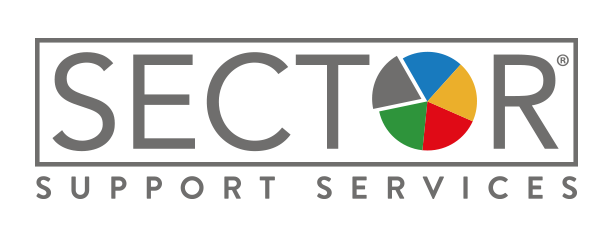In the rapidly evolving landscape of digital finance, understanding the security measures and licensing legitimacy of online platforms is crucial for users seeking safe and reliable services. CryptoLeo, a prominent player in the crypto trading and casino industry, often prompts questions regarding its trustworthiness. To assess whether CryptoLeo is a legitimate platform, it is essential to analyze its security infrastructure and licensing acknowledgments comprehensively. This article offers an educational overview of key security features and regulatory transparency measures, illustrating timeless principles through modern examples such as CryptoLeo.
Table of Contents
What encryption methods and safety features does CryptoLeo implement?
Encryption forms the backbone of data security in online platforms, especially those handling sensitive financial information. CryptoLeo employs several encryption protocols to safeguard user data and financial transactions. Notably, the platform utilizes SSL/TLS encryption, which encrypts data in transit, preventing cybercriminals from intercepting or tampering with information such as login credentials and payment details.
Analyzing the use of SSL/TLS protocols for user data security
Secure Sockets Layer (SSL) and Transport Layer Security (TLS) protocols are standard security measures across reputable online platforms. They establish an encrypted link between the user’s device and the server, ensuring that all transmitted data remains confidential. When visiting CryptoLeo, users should observe the padlock icon in the browser address bar, indicating active SSL/TLS encryption. This practice aligns with industry standards and is fundamental for preventing man-in-the-middle attacks.
Assessing multi-factor authentication and biometric login options
Beyond encryption, user authentication methods significantly enhance security. CryptoLeo offers multi-factor authentication (MFA), requiring users to verify their identity through additional steps like SMS codes or authenticator apps. Some platforms also incorporate biometric login options, such as fingerprint or facial recognition, providing seamless yet secure access. These measures considerably reduce the risk of unauthorized account access, especially in the context of increasing cyber threats.
Reviewing measures against common cyber threats like phishing and malware
Cyber threats such as phishing and malware are persistent risks for online financial services. CryptoLeo actively implements anti-phishing protocols, including email verification and user alerts for suspicious activities. The platform also maintains malware detection systems and encourages users to employ strong, unique passwords. Education on recognizing phishing attempts is often provided as part of their security protocols, emphasizing that user awareness is integral to overall safety.
How transparent and verifiable are CryptoLeo’s licensing and regulatory acknowledgments?
Licensing and regulatory compliance are critical indicators of a platform’s legitimacy. They demonstrate adherence to legal standards and industry best practices, offering users assurance of operational integrity. CryptoLeo’s licensing status can be verified through official regulatory bodies, and transparency in this area is often associated with higher trustworthiness.
Verifying licensing jurisdictions and compliance with industry standards
CryptoLeo claims to operate under licenses issued by reputable authorities. To verify this, users should consult the licensing jurisdictions listed on the platform and cross-reference them with official regulatory databases. For example, licenses from well-known jurisdictions such as Malta (MGA), Curaçao, or the UK Gambling Commission are considered credible. Compliance with industry standards like KYC (Know Your Customer) and AML (Anti-Money Laundering) policies further reinforce legitimacy.
Examining public records and licensing authority endorsements
Public records and endorsements from licensing authorities are accessible through official websites. CryptoLeo’s licensing credentials should be publicly displayed or available upon request, with verifiable links to the licensing bodies’ databases. Such transparency indicates a commitment to regulatory compliance and enhances user confidence.
Identifying any third-party audits or security certifications obtained
Third-party audits and security certifications, such as ISO/IEC 27001 or PCI DSS compliance, demonstrate rigorous security standards. CryptoLeo’s platform may publish details of recent audits and certifications, which are often conducted by recognized cybersecurity firms. These independent assessments provide an extra layer of assurance that security measures meet globally accepted benchmarks.
What are the common red flags indicating potential security risks or licensing issues?
While many platforms strive for transparency, certain warning signs may signal underlying security vulnerabilities or licensing concerns. Recognizing these red flags helps users make informed decisions.
Spotting signs of unverified or obscure licensing claims
Platforms claiming licenses without providing verifiable documentation or clear licensing jurisdictions should be approached with caution. Legitimate licenses are publicly accessible and linked directly to regulatory authorities. An absence of such information or vague licensing claims often indicate potential issues.
Detecting inconsistencies in security disclosures or user reviews
Inconsistent or vague security disclosures, coupled with negative user reviews about fund withdrawals or account access, can be red flags. Transparency about security protocols, combined with positive user feedback, is a strong indicator of platform credibility.
Evaluating the platform’s response to past security breaches or regulatory inquiries
Platforms with a history of security breaches or regulatory investigations should be scrutinized carefully. A responsible platform typically responds transparently, providing detailed explanations and remedial actions. Conversely, evasive or dismissive responses may suggest deeper issues.
“Security and licensing are the foundation of trust in online financial platforms. Users must prioritize transparency and verified credentials to safeguard their assets and personal information.”
In conclusion, understanding the security infrastructure and licensing transparency of platforms like CryptoLeo is essential for any user navigating the complex world of online crypto services. As illustrated through modern examples, adherence to robust encryption, multi-factor authentication, and licensing verification are timeless principles that underpin platform legitimacy and user safety. For more insights into specific platform assessments, visit https://cryptoleocasino.org/.
